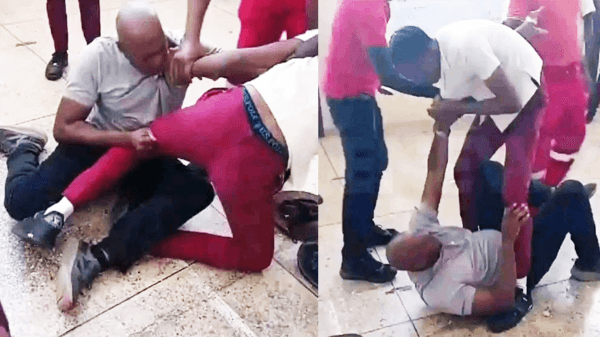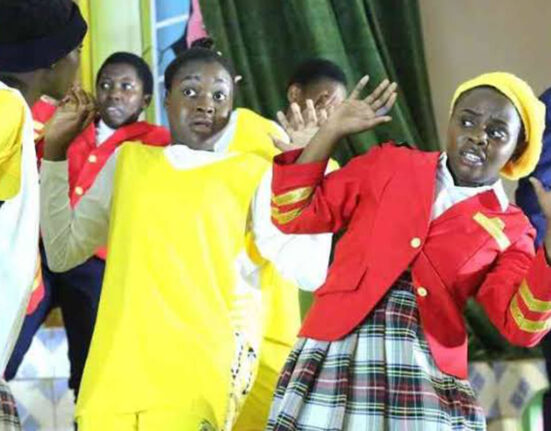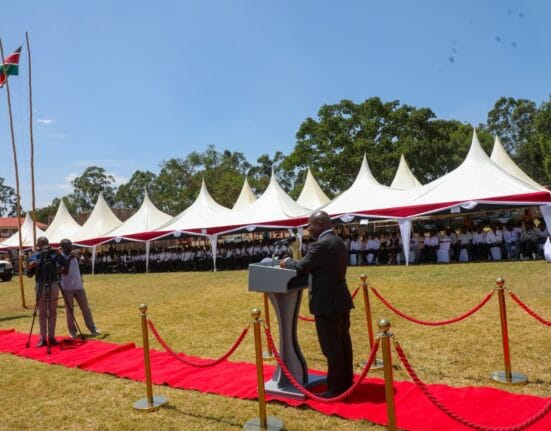Moruga Secondary School
On a typical school day at Moruga Secondary School, an incident unfolded that would leave the community in shock. The clash occurred during a routine session, which was marked by tensions arising from a violation of the institution’s dress code policy by a student.
Thank you for reading this post, don't forget to subscribe!Reports indicate that the student arrived at school wearing attire that did not comply with the established guidelines, a fact that had drawn the attention of the teaching staff early in the day. The dress code is a fundamental aspect of maintaining discipline and decorum in educational settings, making its violation a serious concern for educators.
The teacher involved, known for having a firm approach to rules and regulations, confronted the students regarding their inappropriate attire. Although the initial discussion aimed to address the dress code breach amicably, the situation quickly deteriorated.
The student reportedly reacted with defiance and disrespect towards the teacher’s authority, leading to an escalation of tensions. What began as a verbal exchange shifted dramatically when both parties engaged in a heated argument, attracting the attention of nearby students and staff.

Witness accounts recount that the verbal confrontation rapidly descended into physical violence. It is reported that a scuffle ensued, with both the teacher and the student exchanging blows that were described as unforeseen and alarming.
The rapid escalation of this conflict raised immediate concerns for the safety of those present and prompted intervention from other staff members. Consequently, the situation was brought under control, but not before leaving an indelible mark on the school’s environment.
This troubling incident serves as a stark reminder of the complexities faced by educators today, particularly when managing classroom discipline and maintaining a respectful atmosphere.
Response and Reaction
The incident at Moruga Secondary School has elicited a range of reactions from students, faculty, and parents, each reflecting varying perspectives on the clash between the teacher and student.
Witnesses to the event reported shock and disbelief as the fight unfolded unexpectedly amidst the school day activities. Many students expressed a mixture of concern and fear, voicing their disappointment over how such a situation could arise within an educational environment that is meant to promote safety and learning.

Following the confrontation, the emergency response system was activated promptly. School officials quickly intervened to separate the parties involved, ensuring that the situation did not escalate further.
The attendance of local law enforcement and emergency medical personnel underscored the seriousness of the incident and highlighted a collective commitment to student safety. The immediate aftermath saw students gathered in groups, discussing the events and sharing their thoughts on how it could impact their school environment.
In the days following the clash, the atmosphere at Moruga Secondary School remained tense. Teachers and staff held meetings to address the incident, aiming to reassure students and parents alike that such occurrences would be taken seriously.
Teachers expressed concern regarding the implications for student-teacher relationships, which could be strained as a result of this incident. Many faculty members noted the necessity of reviewing school discipline policies to prevent similar situations in the future and to foster a more supportive environment.
Additionally, the incident sparked discussions among parents about the behavioral expectations placed on students and the support structures available to teachers in managing classroom dynamics.
The community’s response indicates a significant desire for constructive dialogue surrounding discipline, safety, and mental well-being within schools, emphasizing that addressing underlying issues is key to maintaining a favorable educational atmosphere.
Injury Reports and Medical Response
The recent confrontation at Moruga Secondary School resulted in significant injuries for both the teacher and the student involved. Reports indicate that the teacher sustained a concussion and multiple contusions, primarily from being struck during the altercation.
In contrast, the student experienced lacerations and bruising, primarily inflicted during the physical struggle.
The nature and severity of these injuries highlight the violent escalation that occurred, raising concerns about safety and conflict resolution within the school setting.

Following the incident, the immediate medical response was crucial. Emergency personnel were dispatched to the scene, where they quickly assessed the condition of both individuals. The teacher was stabilized and subsequently transported to a nearby hospital, where further evaluation revealed the need for a CT scan to exclude any severe brain injury.
Treatment protocols were promptly initiated, including pain management and monitoring for potential complications resulting from the head trauma.
Meanwhile, the student received first aid at the school before being advised to seek further medical attention for his wounds. Healthcare providers evaluated the cuts and recommended treatment to prevent infection and ensure proper healing. The response from medical staff underscored the importance of timely intervention in situations of school violence.
In the aftermath of such traumatic events, the psychological impact on students who witnessed the altercation cannot be overlooked. Witnessing violence can lead to stress, anxiety, and other mental health issues, which may manifest in various forms.
It is imperative for educational institutions to prioritize mental health support following incidents of violence. Providing access to counselors and mental health resources helps students process the events they witnessed, fostering a supportive environment for healing and recovery.
Implications for School Environment and Future Actions
The recent incident at Moruga Secondary School involving a violent clash between a teacher and a student has raised significant questions regarding the implications for the school environment and future actions necessary to mitigate such occurrences.
The atmosphere within the school can be adversely affected by incidents of violence, leading to heightened anxiety among both students and faculty. This climate can influence the overall educational experience, as safety concerns may detract from students’ ability to focus on their studies. Furthermore, the involvement of law enforcement in such incidents complicates the school’s environment and challenges its ability to maintain a safe learning space.

In light of this altercation, discussions around school safety are more pertinent than ever. School administrators may need to review and enhance existing safety protocols to prevent future violence, ensuring both students and teachers feel secure in their environment.
Additionally, this tragedy may necessitate a reevaluation of disciplinary measures currently in place. Schools often face the challenge of balancing discipline with understanding, particularly when addressing student misconduct. Clear guidelines that emphasize restorative practices could provide a pathway to rebuilding relationships and fostering a sense of community, rather than relying solely on punitive actions.
It is crucial to acknowledge the student’s expressed intention to leave Moruga Secondary School. Such decisions, often driven by negative experiences, can lead to diminished enrollment and, ultimately, damage the school’s reputation.
Given that the overall perception of a school can significantly influence its ability to attract students, addressing the fallout from this incident promptly and effectively is essential. By engaging in open dialogues with stakeholders—students, parents, teachers, and the community—the school can develop strategies aimed at restoring trust, ensuring that a safe and supportive environment is established for all.






